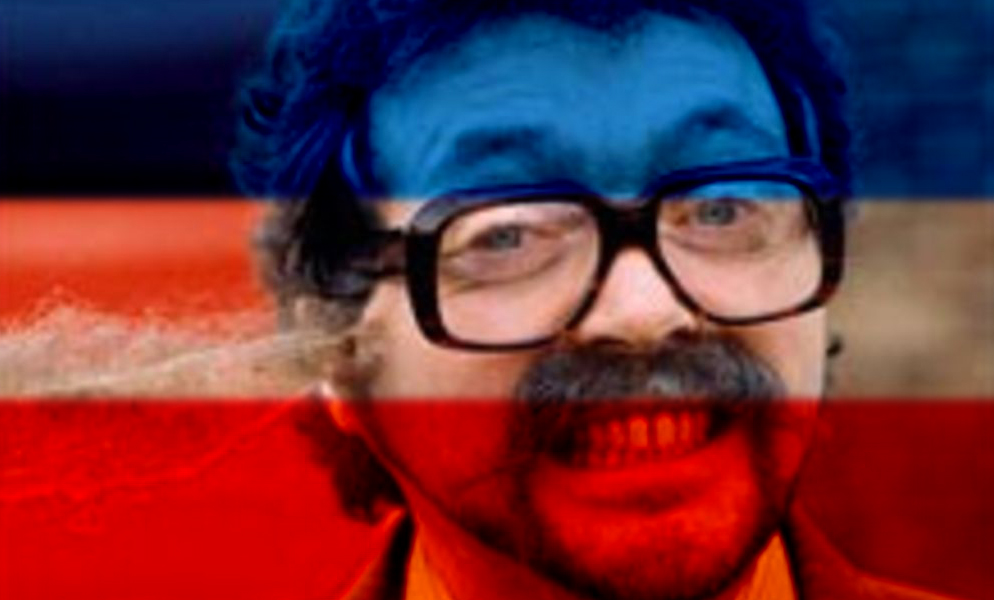
Also:
- It's Saturday Night
- 2. An autograph before you go
- 3. A new kind of game show
- 4. A rising exasperation with the quantity of dirt
- 5. The whole thing suddenly fell apart
- 6. Synthetic propensity
- 7. It was destined to be an anti-climax
- 8. This is your show now
- 9. The awesome scale of our wastefulness
- 10. Hands up those who couldn't care less
- 11. Together We’ll Be Ok
- 12. Decide the shape of ITV in the 1980s
- 13. Alan is too commercial
- 14. It worked like a dream
- 15. Older men, doing school boy tricks
- 16. Killing the Golden Goose
- 17. People love us to be sexy
- 18. The manure is worth more than the cattle
- 19. They were big in the States and we noted that
- 20. I’m still aggressive and I’m still handing out the insults
- 21. A new style of lunatic humour
- 22. The Habitat-bean-bag-hessian-wallpaper brigade
- 23. Thoroughly sinful
- 24. All carrots should be scraped, sliced and cooked
- 25. Back then it was radical stuff
- 26. Whatever they do, we can do it better
- 27. You'll have to take us as you find us
- 28. Entertainment that keeps on the move
- 29. It's the public that has to pay
- 30. The last we saw of either of them was their sad faces
- 31. Just shoot the bastard
- 32. Britain could clearly be facing its darkest hour
- 33. Any enthusiasm we may have had for continuing discussions is waning
- 34. It was considered by LWT and then put in a bottom drawer
- 35. Watch the redoubtable Terry take off
- 36. I thought it might be terrible and I wouldn’t enjoy it at all
- 37. Kamikaze Mastermind
- 38. We haven’t moved into luxury
- 39. We are investing in people
- 40. Delivered impeccably
- 41. He has to allow you to do your bit
- 42. All the anticipation of the great emotive point
- 43. If you want Russ Abbot to do it, then you have to accept me and my ideas
- 44. Let’s get straight into this
- 45. Unedifying Greed
- 46. We’ve got the fucking lot!
- 47. Scope for humour and danger
- 48. Pure Megablast
- 49. There’s lots of killing, but not much else
- 50. I wanted to make sure it was going to be disastrous
- 51. Oh dear – Auntie’s playing bingo!
- 52. A Shrivelled Little Thing
- 53. I shouldn’t have accepted it
- 54. We would be the spoilsports
- 55. The Most Sexless Person In Television
- 56. They’d have strung me up if I hadn’t chosen him
- 57. Is there some way to play with the internal constituent parts?
- 58. The most important entertainment programme of my time
- 59. The plumply pretty female duo
- 60. The audience just sort of started to freeze on him
- 61. More pilots than British Airways
- 62. There's going to come a time when you'll have to go to the BBC
- 63. A slightly pretentious manifesto
- 64. Things Look Very Precarious
- 65. It’s no good doing all the same old people all the time
- 66. That’s just not funny Bobby, it's corny - just don’t do that
- 67. Well bottom’s not funny
- 68. We Are The Funnymen
- 69. The powers that be listened to Denis
- 70. Stretchers never go up stairs
- 71. I was in obscurity until this series
- 72. I don’t care if he doesn’t like me
- 73. There’s such a passion for nostalgia right now
- 74. I Heard A Seat In The Stalls Go ‘Gerdonk!'
- 75. This is your show, folks, and I do mean you
- 76. There’s good news for perplexed fans of 3-2-1!
- 77. Taking on Blind Date would be a real challenge
- 78. You wanna bet on it?
- 79. The yarns worked their tried and tested magic
- 80. The Charge-And-Shout Brigade
- 81. I sat for a moment in silence, then turned in my chair and left the stage
- 82. We just weren't allowed into UK terrestrial television
- 83. Beadle’s A Prick
- 84. The interviewer always has to know when it's best to keep his or her mouth shut
- 85. Can you come up with a good solution for the Murder Weekend mystery?
- 86. He's not a goody- goody hero
- 87. The Sexism, The Dolly Birds, The Catchphrases
- 88. The feel of Saturday night
- 89. 1990 Who would employ an ex-alky with lowered self-esteem
- 90. It were a right smack in the face
- 91. Look Straight Into My Eyes And Everything Will Be Alright, That's A Promise
- 92. That's the last thing I was expecting, Jim
- 93. The characters and situations are real
- 94. Oh Man, There Go All My Women Fans
- 95. A Double Order of Talent
- 96. If there is an air of spontaneity about it, it’ll be genuine
- 97. NTV brings you ... empty rooms!
- 98. You’re BBC, you shouldn’t be here
- 99. If this doesn’t work out, we’re both snookered!
- 100. The humour of Beadle comes through humiliating people!
- 101. To allow such bilge on TV is an insult to the audience
- 102. Like a cup of cold sick
- 103. A litre of gin, ecstasy and crack cocaine
- 104. A reliable tent pole for Saturday evenings
- 105. It is in the cutlery drawer
- 106. Welcome to the new Saturday night
- 107. Congratulations, you have got the fucking Gen Game
- 108. The programme has done extremely badly and will be dropped after this series
- 109. Building the excitement and tension to a crescendo
- 110. He gives us our spirit of unity; we’d all like to strangle him
- 111. The worst programme currently on terrestrial television
- 112. I award the city state of Milton Keynes 100 credits!
- 113. There’s nothing that makes people scream, ‘Did you see that?’
- 114. It was of a standard frankly well below what the public would want
- 115. Waxing An Ape Is My Ambition
- 116. Don’t Get Mad, Get Even
- 117. The penalty shoot-out is the greatest ever endgame
- 118. 200 black boxes are strapped to the back of a cross-section of the nation
- 119. Better For You, Better For All Of Us
- 120. I mean who on earth thought that was a good idea?
- 121. I’m sure the tune was in there somewhere
- 122. This Time, You Decide
- 123. King of trash, that’s me
- 124. It’s about rejection now
- 125. They lost what Popstars was all about
- 126. Win the ads
- 127. A name in search of a series
- 128. Getting grief from the papers
- 129. I’m so pleased to be back on television
- 130. Saturday nights haven't been this interesting for 10 years
- 131. It’s the Usual Nonsense
- 132. The trip of a lifetime
- Epilogue: Why Haven't You Written a Series of Articles on Tuesday Night Telly?
|
“Nothing on television so exercises the critics as the game shows,” wrote Laurie Taylor and Bob Mullan in their book Uninvited Guests: Intimate Secrets of Television and Radio, and Game For A Laugh exercised its fair share of critics from day one. Much of the censure took the show to task for its exploitation of people’s emotional frailty or for the programme’s perceived irresponsibility. One item, in which members of the audience were invited to inhale nitrous oxide, came under criticism for encouraging viewers to partake in dangerous activities. In addition, the IBA was called in to investigate complaints that on one show, a six-year old girl told an “offensive” story. However, in the main Game For A Laugh was well received by its audience. It had a particular appeal to youngsters (with Peter Fiddick identifying it in 1982 as one of the 10 most watched programmes by children) and informed much of the Monday morning playground debate in schools around the country.
Game For A Laugh appealed to the Saturday evening television viewer. Issues of taste, decency and intellectual content (that were to prove more contentious when the show was moved to Sunday nights) seemed to matter less in the middle of TV’s glitziest night of the week.
However, this very particular relationship between viewer and programme and schedule, didn’t prevent some of the audience building up a strong reaction to Jeremy Beadle. Previously best known for innocuous BBC children’s factual programmes Eureka and The Deceivers, Beadle quickly became the most popular presenter on Game For A Laugh. However, in time, and particularly as the public grew more and more disaffected with the programme, Beadle provoked an increasingly negative response. “I attracted personal abuse,” he recalled. “I’m not all that thick-skinned and I can be bruised and battered like the next person … I’m not a particularly vain person … but they called me fat and bulgy-eyed and deformed”. While his subsequent programmes, such as Beadle’s About and People Do the Funniest Things would reinforce Beadle’s status as a reviled public figure, there is no doubt that this persona was forged on the back of Game For A Laugh.
Anti-Beadle sentiment reached its zenith in the mid-late 1990s, during which time he became the very epitome of all that the public purported to despise. In one poll, the lover of facts and practical jokes found himself second only to Saddam Hussein as Britain’s most hated man. Happily, in later years the public’s antipathy dissolved. There appears to have been little about Beadle the man to actually dislike. We are left then, to consider the strange relationship between the viewer and those who front popular Saturday night television programmes. “I think we do live in an envy society, fuelled by the press that wants to sell papers,” reflected Beadle some years later. “It’s very easy to give people labels and good news labels doesn’t sell papers. Noel Edmonds, for example is a formidable presenter. There were years when I was on for 52 weeks a year and Noel was on for 26. Well, you know, I wouldn’t watch Elvis Presley for 52 weeks a year.”
But apart from their ubiquity, was there something else about the role of Beadle and Noel Edmonds – and others of their kind – that set them up for hatred? Was Beadle a manifestation of our own self-loathing at finding ourselves enjoying what we were consistently reminded by the critics to be mindless, and “cruel” television? For Beadle, the most plausible theory was that viewers would feel guilty for laughing at other people’s misfortunes and rather than blame themselves, they’d pour scorn on the perpetrators. For producer Michael Hurll though, there was a shift in public opinion that took place. “Before, the general view was, ‘oh that’s funny, they’ve just caught someone out’, but that changed [to a resentment that Beadle and Edmonds] were making a living out of making fun of people,” he says. Hurll also believes that Edmonds and Beadle continuing to ply their trade, while getting older, didn’t help. “They were older men, doing school boy tricks. Perhaps the public thought they should have grown up.”
Although he claimed the negative view of him was largely created by the press and not shared by the general audience, it is difficult not to feel some sympathy for the position Beadle found himself in. “I hated it, and felt for him when he was described as the most loathed man on television,” says Noel Edmonds. “That was so unfair and he dealt with it with great dignity.”
Game For A Laugh’s first series concluded in 1981 with a spectacular achievement. “By 5 December, Larry Grayson and … Isla St Clair, who had had a good run hosting The Generation Game, had announced that the time had come when they both felt they needed to do something else, and they were quitting the programme,” recalls original Generation Game host Bruce Forsyth. “Their last edition was to be recorded on 17 December … The Gen Game’s ratings had recently slumped against Game For A Laugh”. For Beadle, this represented mission accomplished, for Boyd – validation of his principles of popular television; and for LWT – the realisation they could survive the financial turbulence of the early 1980s by applying the Game For A Laugh formula to other slots in the weekend schedules. This philosophy would prove instrumental in shaping popular modern Saturday night television, as well as providing LWT with a reputation for “low quality” entertainment that it would never quite manage to shake.
Alan Boyd, Frontpage!, Game For A Laugh, Henry Kelly, It's Saturday Night, Jeremy Beadle, Matthew Kelly, Michael Grade, Noel Edmonds, Sarah Kennedy, The Generation Game



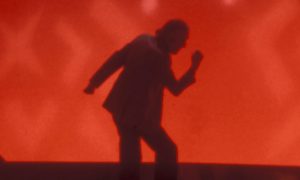



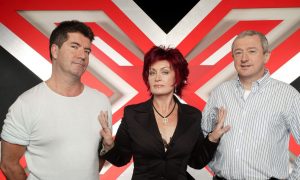



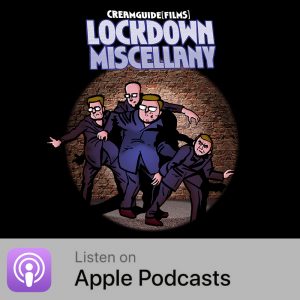
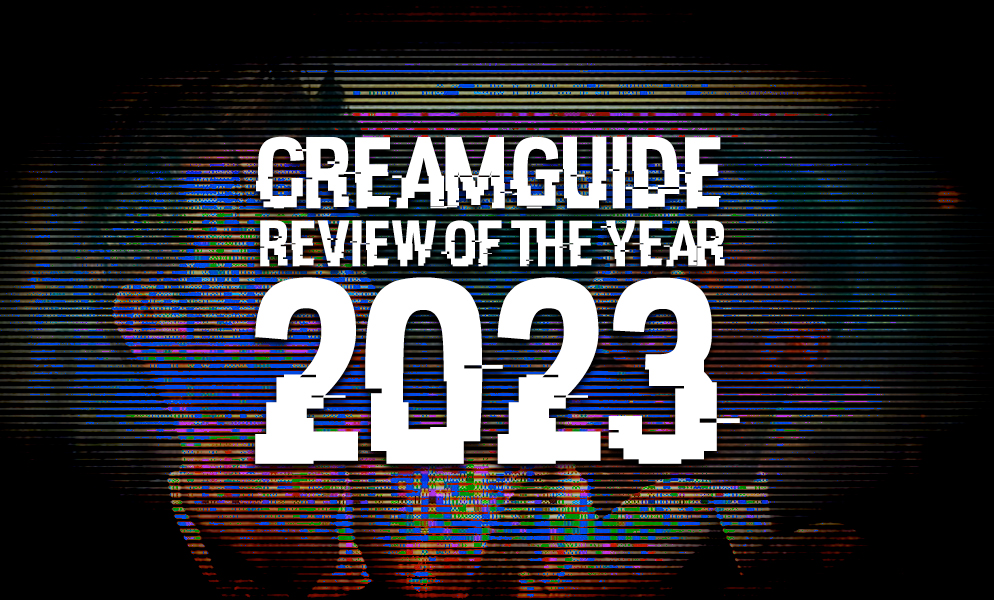
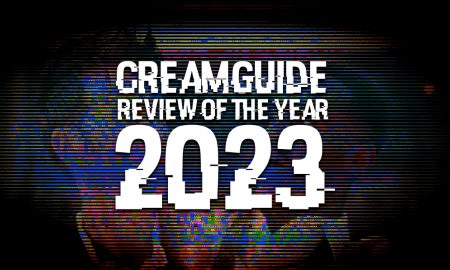
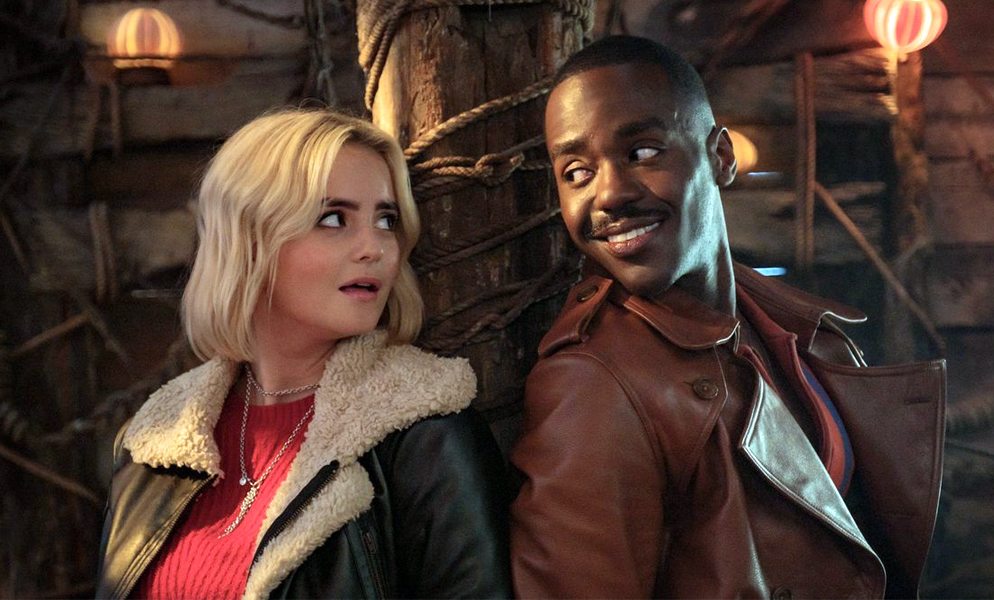
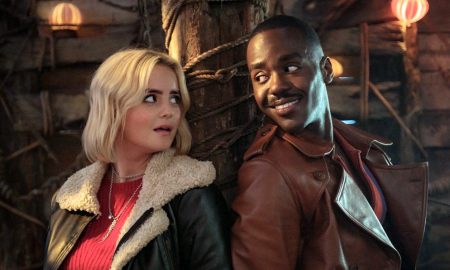
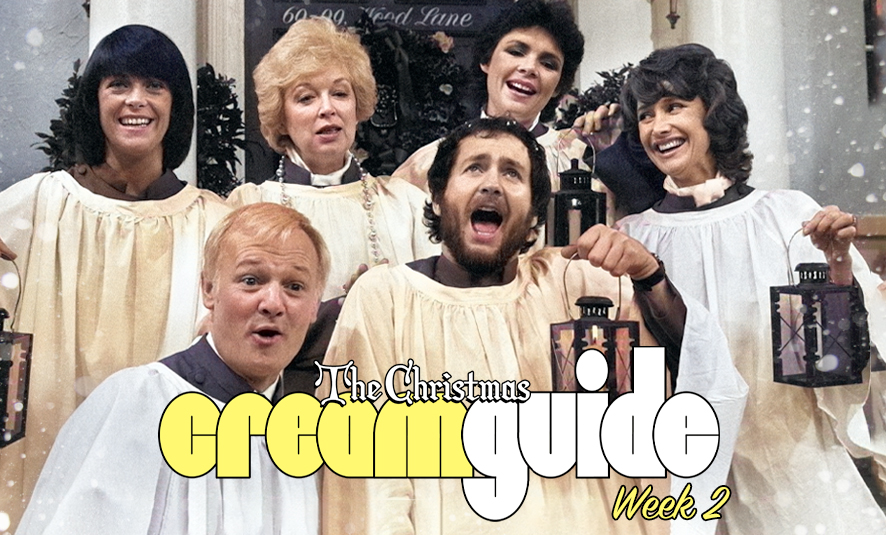
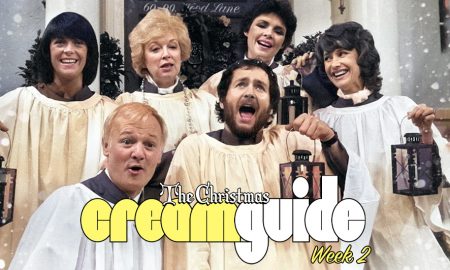
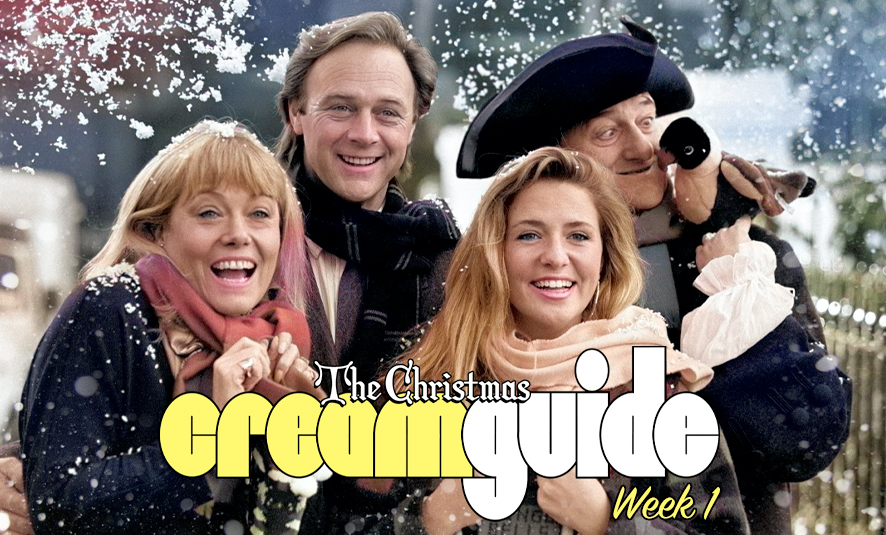
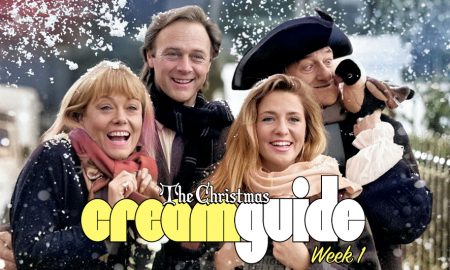
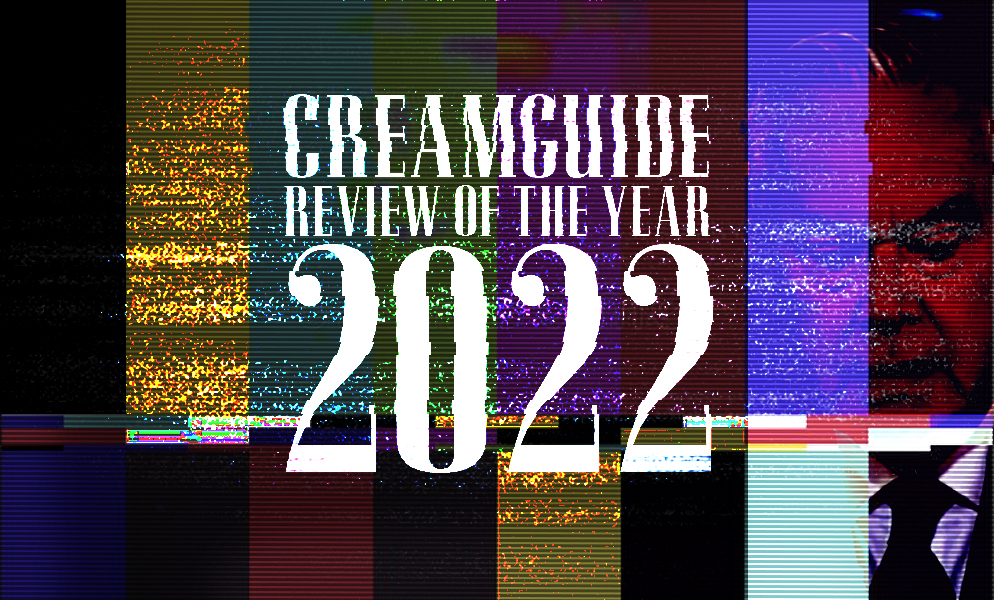
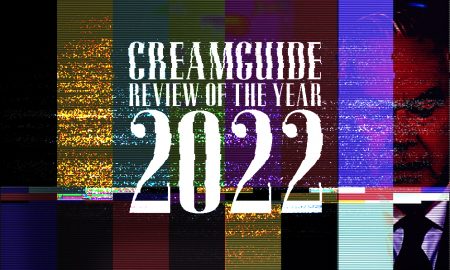

Glenn A
December 2, 2017 at 2:11 pm
Shades of Game For A Laugh exist in Michael Mc Intyre’s Big Show, particularly where he disguises himself and sets up members of the public in places like restaurants and shops. Game For A Laugh might have only ran for 5 series and started to go downhill by series 4 when the presenters were changed, but its influence on Saturday night television was immense from Noel Edmonds House Party to Michael Mc Intyre.
Richard16378
December 2, 2017 at 7:57 pm
I remember The Late Late Breakfast Show used to have The Hit Squad, who would do a Game For a Laugh style set up.
Glenn A
December 3, 2017 at 5:01 pm
Game For A Laugh totally rattled the BBC, whose once unbeatable Saturday night schedule now had some really serious competition, with Game attracting 16 million viewers. Richard is right, the BBC needed a popular rival quickly, and The Late Late Breakfast show was a successful attempt to imitate Game, and also started the second phase of Noel Edmonds career.
One thing was certain after 1981, ITV started to show some excellent programmes on Saturday nights and BBC1 was never the juggernaut it was in the seventies and in 1983 and 1984 seemed to really fall behind.